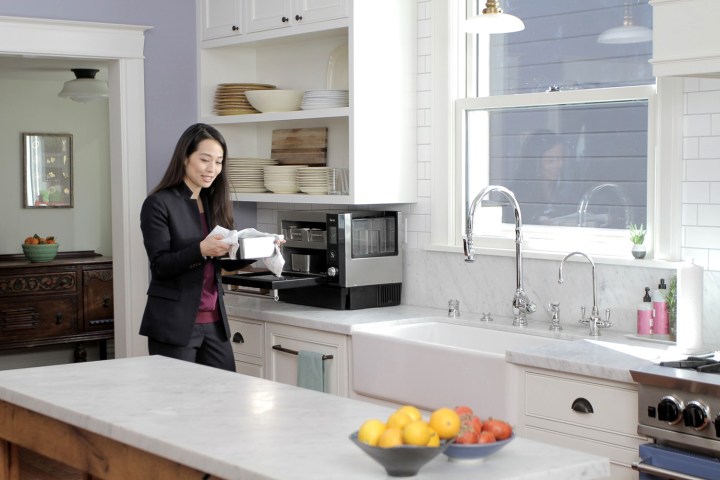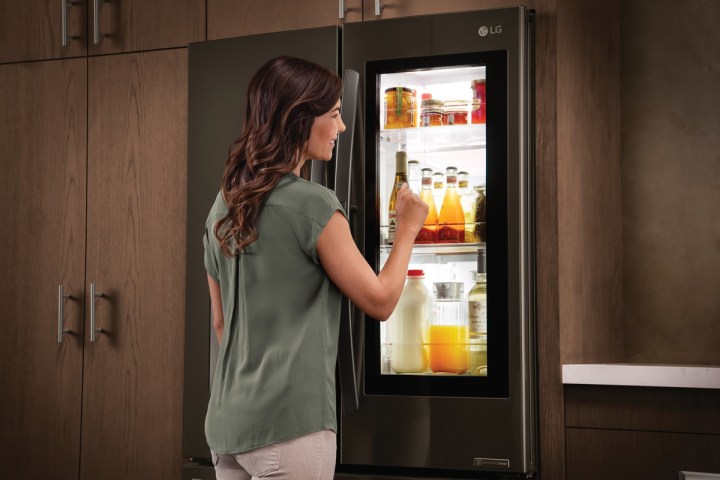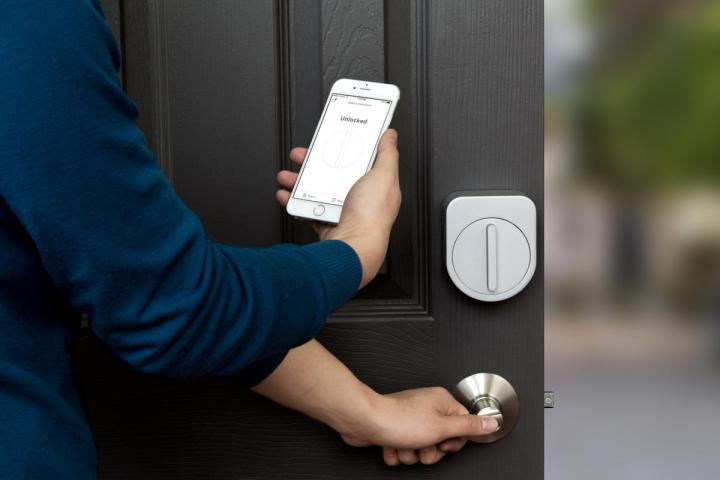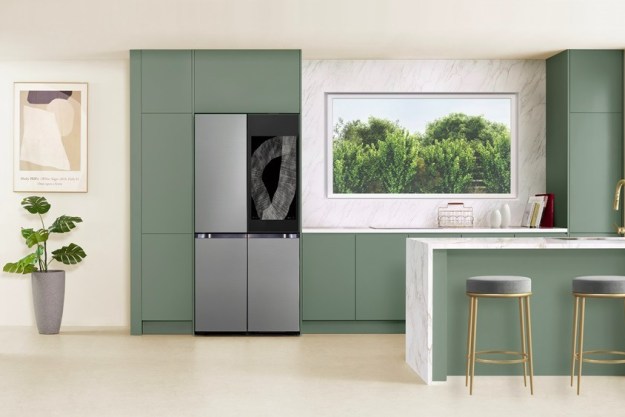
It’s amazing that George, Jane, Judy, and Elroy Jetson were so thin in the cartoon, The Jetsons.
After all, with moving walkways inside their homes (including inside their showers!), an appliance that churned out multi-course meals with the push of a button, and Rosie the Robot handling all the chores, none of the family members hardly had to move a muscle.
The futuristic cartoon that debuted in 1962 featured all kinds of time-saving home hacks and a whimsical idea of what life could look like in the year 2062. While we still have 46 years to go until then (hopefully during that waiting period, someone will have invented a car that folds up into a suitcase), our homes are already looking more and more futuristic, thanks to the rapidly increasing availability of smart home technology.
More people will embrace connected homes — perhaps even your Uncle Marv, who’s still rocking a Blackberry.
There are now smart locks on our front doors that we can control from anywhere. We can buy refrigerators that can order us more milk when we’re running low. And we have beds that adjust based on our sleeping patterns.
At the 2018 Consumer Electronics Show in January, we saw even more futuristic gadgets for the home, including a TV that rolls up like a poster, a mirror that talks to us, a laundry folding machine, and a queen-sized bed that rocks us to sleep.
Are we officially entering the futuristic age depicted in shows and films like The Jetsons or Back to The Future II? Maybe in some ways, but smart home technology is in its infancy and there’s still room for growth. One thing’s for sure: While robots like Rosie might be a bit far into the future, there are now thousands of home devices on the market that are “smart,” meaning that they connect to some sort of app or hub and can talk to us and each other.
We can expect the number of these products to not only increase but also become smarter, more futuristic, and more affordable, experts say. That means that more people will embrace connected homes — perhaps even your Uncle Marv, who’s still rocking a Blackberry.
“There’s been years of snowball effect, and in the last year we’ve seen a lot of acceleration in popularity,” Alex Hawkinson, CEO of Samsung SmartThings, told Digital Trends. “It’s moved from the early adopter to the mainstream phase.”
Alexa, start my bath
Picture this: You walk up to your front door after work, and sensors in your smart lock recognize you and automatically unlock to let you in. You walk inside and say, “Alexa, I’m home,” and your lights turn on, your favorite music begins playing, and your door automatically re-locks behind you.
You walk into your kitchen and say, “Alexa, show me recipes with ingredients that are in my fridge.” When your fridge shows a list on the display screen, you select “lasagna,” and then tell the fridge to send the recipe to the oven, which automatically begins pre-heating. Before starting the meal prep, you ask Alexa to turn on your faucet so that you can wash your hands.
After eating, you head to the bathroom, where you tell your mirror to turn on the lights and start your bath. Water begins running at exactly the right temperature and automatically stops at exactly the right time — all based on the settings you created in an app on your phone.
You slip into bed and say, “Alexa, good night,” and she turns off the lights for you and sets an alarm for 6 a.m.
Think this is just a hypothetical scenario? Nope. All of this technology exists now, thanks in part to the rise of artificial intelligence voice assistants like Amazon Alexa, Google Assistant, and Apple Siri, which can not only take directives from you, but also respond, offering cooking advice or even telling you how to spell “Mississippi.”
Grandma and grandpa’s ability to operate their homes with their voices could mean they remain independent longer.
These small but mighty voices are not-so-quietly taking over the smart home technology space, connecting your devices to you and each other. Consequentially they also make it extremely easy for your child to add cookies to your shopping list or request Disney songs, over and over.
But unintended purchases and repeats of “Let It Go” aside, these voice assistants are creating an appealing reason for people to buy into smart home technology in the first place, according to experts. If you can control the lights in your home with just your voice, why wouldn’t you?
“For a long time, having a smart home meant you had to unlock your phone, open up an app, and press a button within that app just to turn on a light. At that point you might as well just have gotten off the couch and turned off the light yourself,” Jonathan Richardson, smart home spokesperson at Amazon, told Digital Trends. “With the introduction of Alexa and hands-free voice in the home, we think customers are seeing now more than ever that smart home isn’t as complicated as many people once thought.”
Many people apparently agree with this — the Amazon Echo Dot ($50) and rival Google Home Mini ($50), both on sale for $30 a pop over the holidays — were hugely popular gifts last Christmas. And according to a recent study, almost half of all adults in the United States say they plan to buy a smart speaker in 2018.
These devices are serving as a bit of a “gateway drug” to other smart home devices. You buy a Google Home Mini, and then realize that you can turn on the TV or play music just by telling your device to turn them on. Then you think, “what else can I do with this thing?”
Grandpa, it’s called a Google Home Mini
It’s not just about smart speakers though. Many smart home devices are now coming on the market at a price point that is making a lot of people say, “Why not?” Once they get their hands on one device, say some light bulbs or a smart plug, and connect them, it snowballs from there. Customers then realize they can do more than just turn on their lights from their phones.
“People start with something simple,” Hawkinson told Digital Trends. “You put that idea in someone’s mind and it grows from there.”
We can now buy refrigerators that can order us more milk when we’re running low.
Consumers then buy more items, companies make more connected stuff, and it all goes in a circle. Case in point: Richardson said that more than 4,000 devices are now Amazon Alexa compatible, while Hawkinson said that there are more than 370 smart home devices that now work with the SmartThings hub. That number is growing due to both consumer demand and company creativity.
“When we first got started, it would cost $500,” for a customer to get up and running, Hawkinson said. “Now we’re getting to the point where the technology is just built in, and the cost of products have gone down as well. Today, you can get set up for $100.”
That means we’ll likely continue to see smart home technology adaptation move into the mainstream and become part of everyday life, not just a toy for geeks. Your parents, grandparents, and even children will be getting in on the action. The toy, pet, parenting, and health and wellness industries are creating smart home technologies that can help their customers. For example, allowing the elderly to operate their homes with their voices could mean they remain independent longer. Smart baby monitors can help alleviate new parents’ fears on whether their newborns are sleeping on their backs. There are even robots that exist to keep your pet company while you’re at work.
OK Google, call 911
So, with smart home gadgets becoming increasingly affordable, are we all on our way to having our own home robots? Maybe someday, but they won’t be mainstream anytime soon. We’ll likely have to wait several years before we see these things outside of a tech showroom floor with any regularity.
One thing we’re more likely to see is an increase of smart wearable technology that monitor our health. We’re already seeing several devices that monitor our sleep. Soon, Hawkinson said, there could be devices that alerts us if something is wrong with our bodies, before we’re even aware of it. Such technology could even go so far as to communicate those things not just with you, but with other devices that can help you during an emergency.
“What if you’ll know in advance if you’re at risk for a heart attack?” Hawkinson said. “I think that smart home devices can significantly improve that equation because it can tell if people need help.”
Beyond wearables and other smart devices, the future of smart home will also likely include the ability to move into a ready-made home with all the smart technology already built in. This technology has the ability to not only control your lights and heating for you, but also learn from your movements and automatically make changes accordingly — something that the characters from The Jetsons never got to benefit from. Companies like Kirio are already working on building homes with all the bells and whistles built in.
As with any technology, it’s difficult to know what we might see in smart homes 20 years from now — anything is possible. But we can deduce that whatever exists now will like be implemented into devices that aren’t already “smart.” Considering that smart air conditioners, sprinkler systems, planter boxes, coffee makers, wine racks, and even water bottles already exist, manufacturers will be clamoring to add smart tech to just about anything you can think of — whether we think we need it or not.
For Hawkinson, one thing is for sure.
“For the laundry folding machine, I know I’ll be the first in line to buy one of those. I don’t care if it’s the size of a garage.”
Editors' Recommendations
- SimpliSafe is now using AI to prevent burglars from entering your home
- Google rolls out new Nest Cam features to Google Home for web
- This 4-in-1 washing machine combo from Eureka cleans almost everything in your home
- Kohler reveals luxurious smart home products that turn your bathroom into a spa
- Segway expands its smart home footprint with robot lawn mowers at CES 2024







